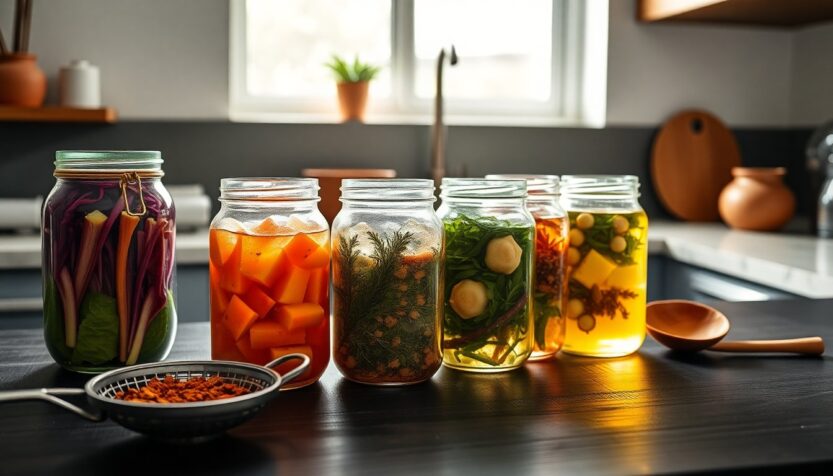The art of fermentation: unlocking flavors through time
Imagine a dish that dances on your palate, each bite releasing a symphony of flavors that evolve and change. This is the essence of fermentation, a technique that not only preserves food but also enhances its natural character.
Behind the science of fermentation
Fermentation is an ancient process, utilized for millennia to create everything from the tangy notes of sourdough bread to the complex flavors of aged cheeses. It transforms sugars into acids, gases, or alcohol using microorganisms such as yeast and bacteria. This process imparts depth and a unique umami quality to food, captivating the senses.
The technique made accessible
As a former chef, I have learned that fermentation is not reserved for culinary professionals; it can be embraced by anyone willing to explore. To begin your fermentation journey, you need only a few simple ingredients, some patience, and a willingness to experiment. For example, making fermented vegetables can be as straightforward as combining chopped cabbage with salt and allowing it to sit for a few days. The outcome? A crunchy, tangy delight bursting with flavor.
Connection to tradition and territory
Many cultures worldwide celebrate fermentation as a vital part of their culinary heritage. In Italy, for instance, we find kefir and kimchi featured in various regional dishes, each telling a story of the land and its people. This technique not only preserves food but also connects us to our terroir, enhancing our appreciation for local ingredients.
An invitation to experience
As you embark on your fermentation journey, embrace the process. Experiment with flavors, learn from your mistakes, and savor the rewards. Each jar of fermented goodness you create is not just food; it is a testament to your journey—a story waiting to be shared. Roll up your sleeves, let your creativity flow, and unlock the delicious possibilities of fermentation.





